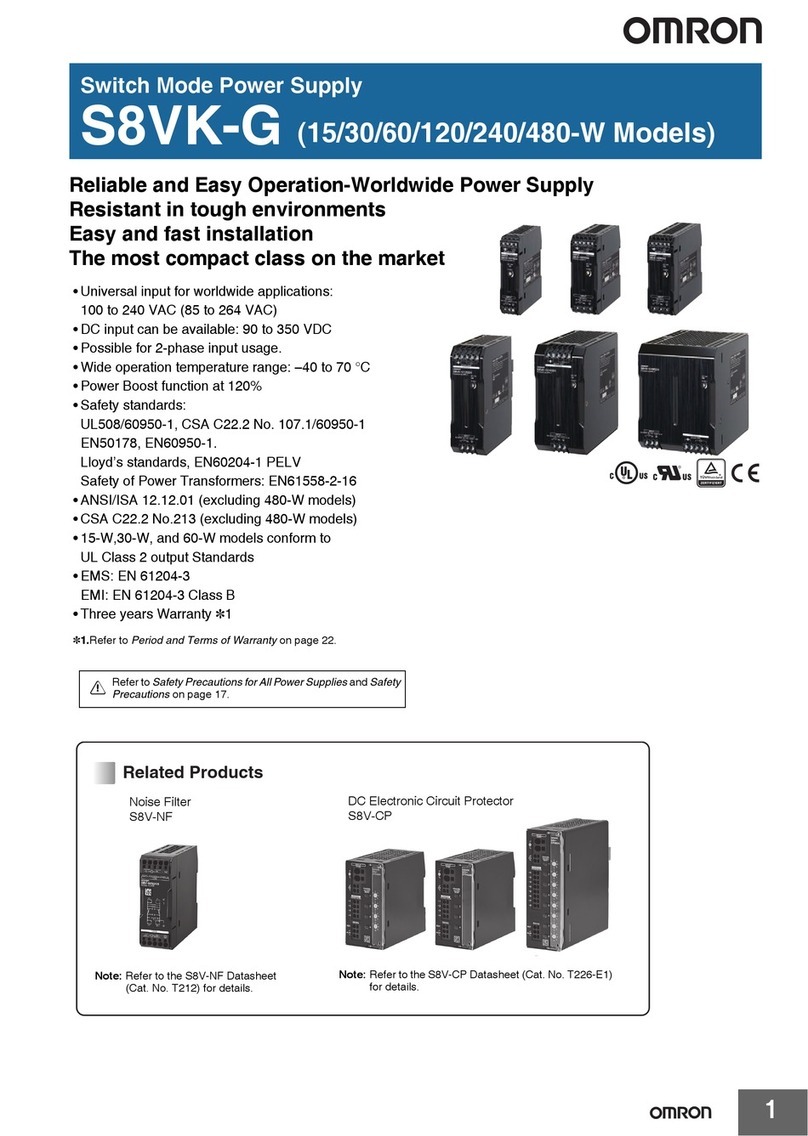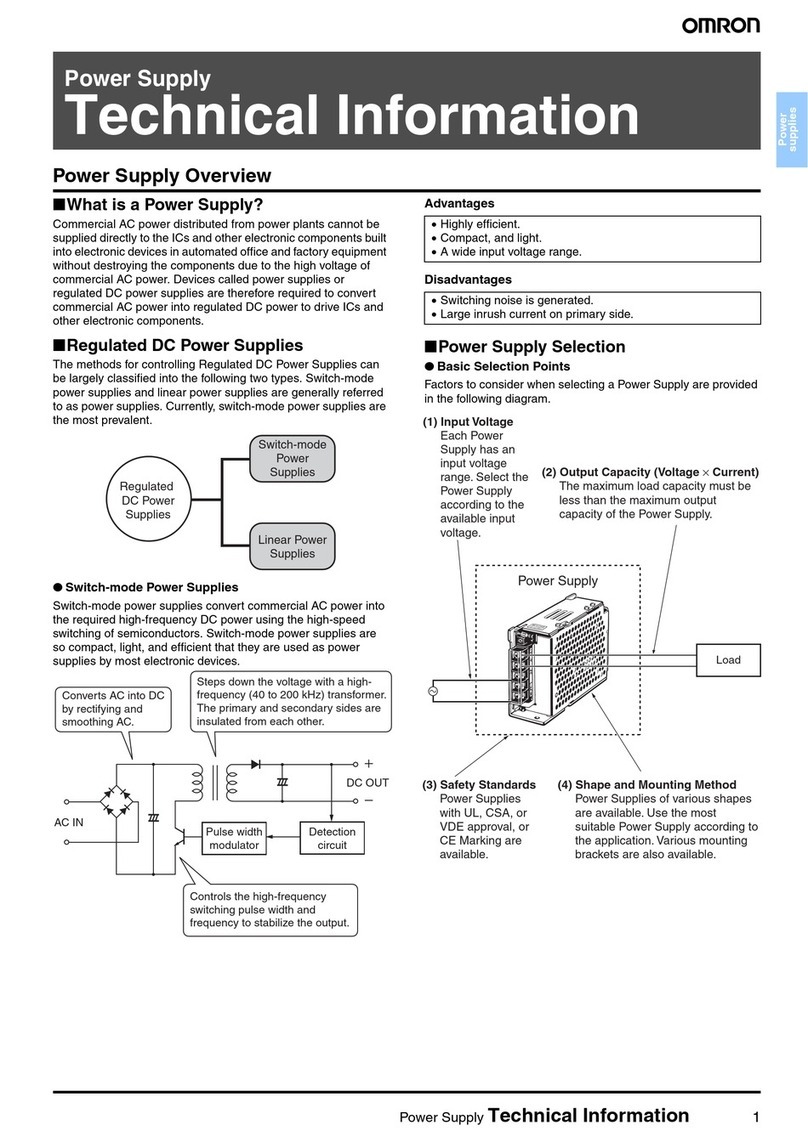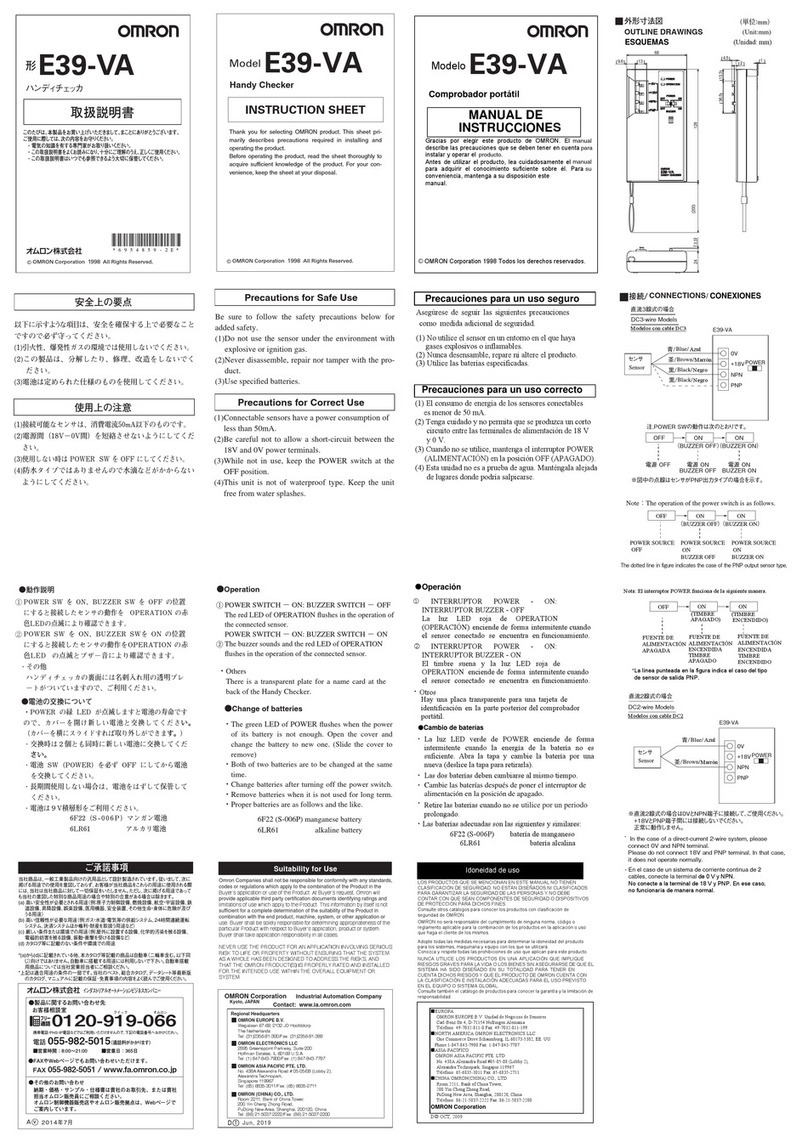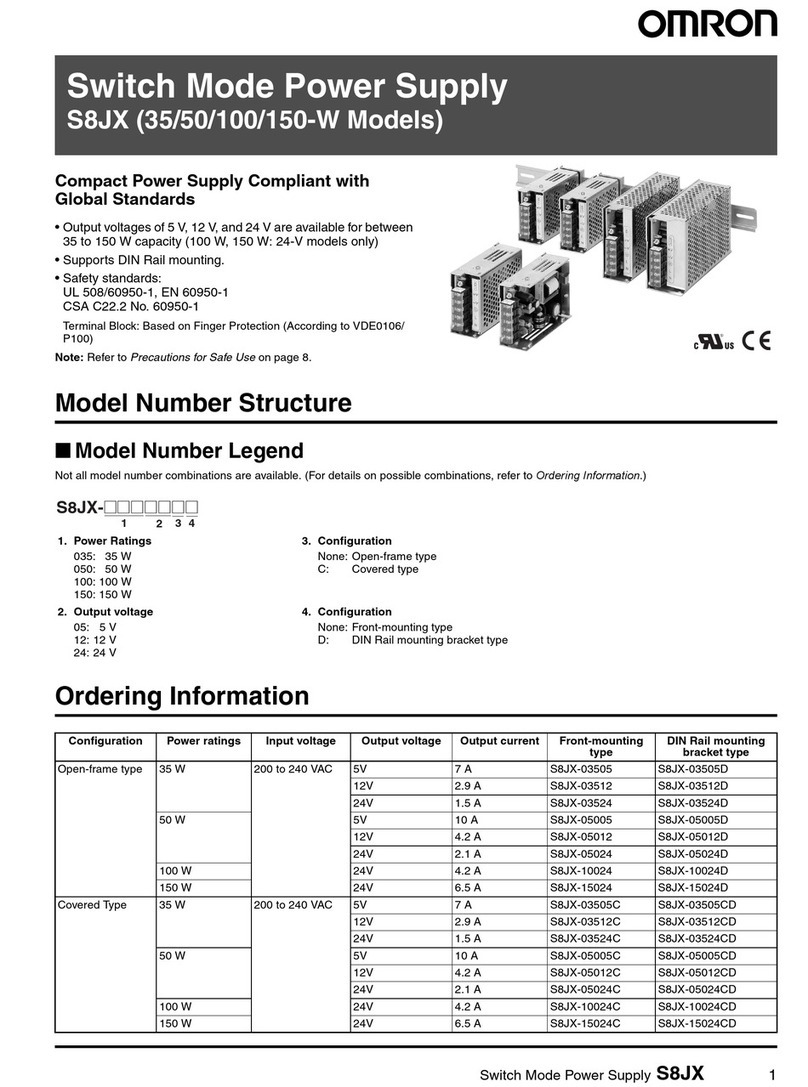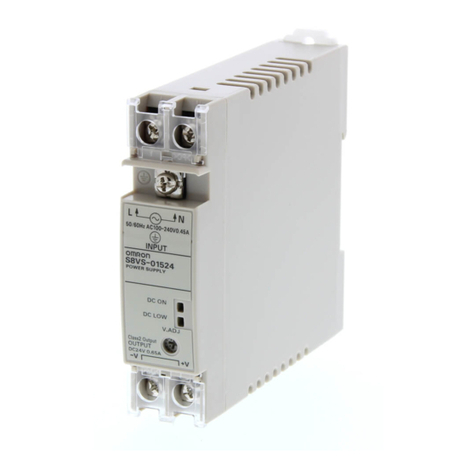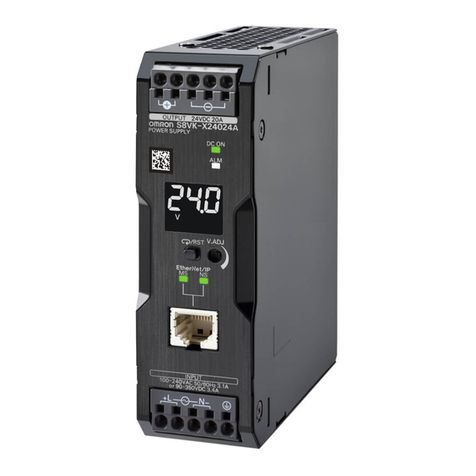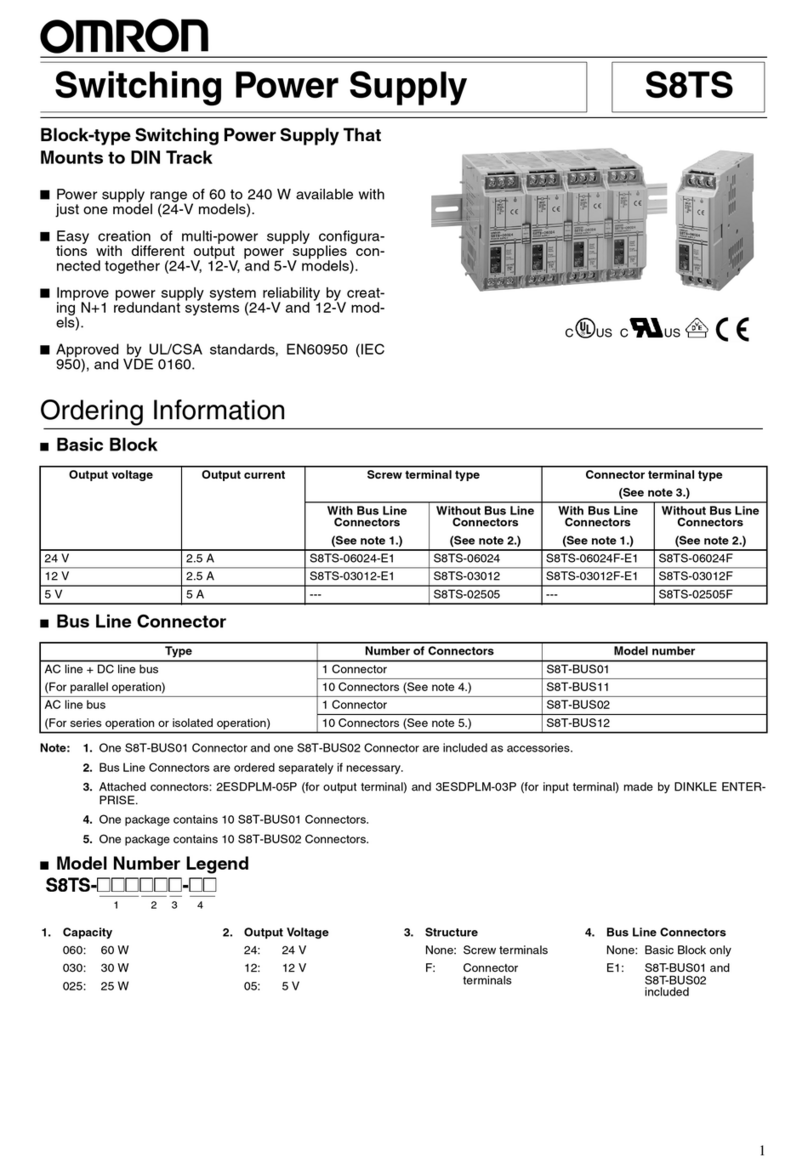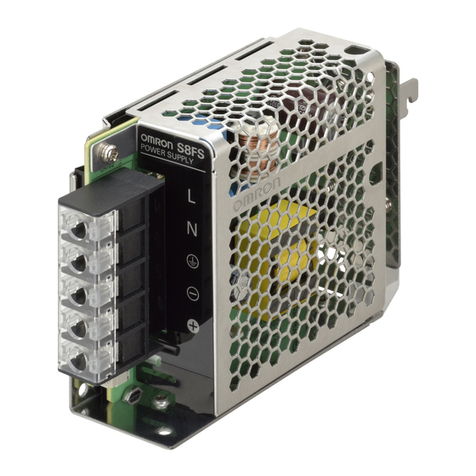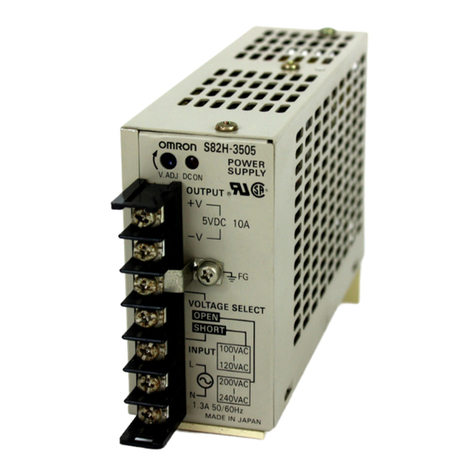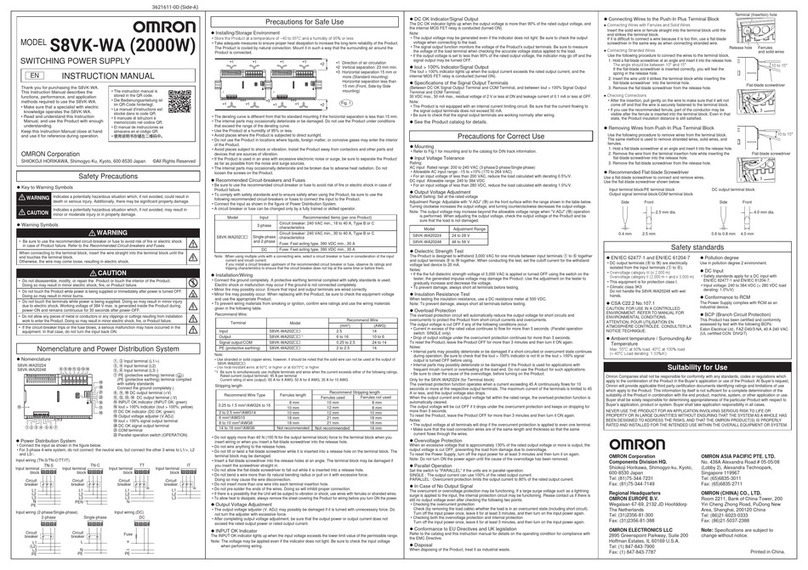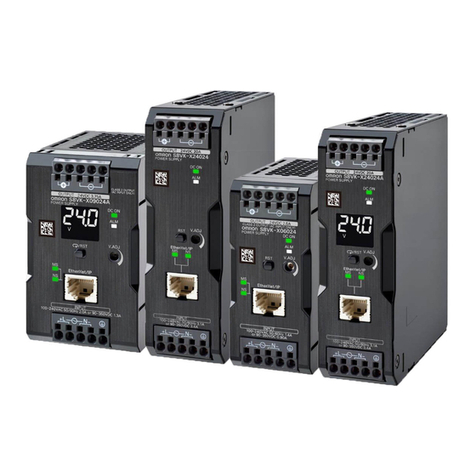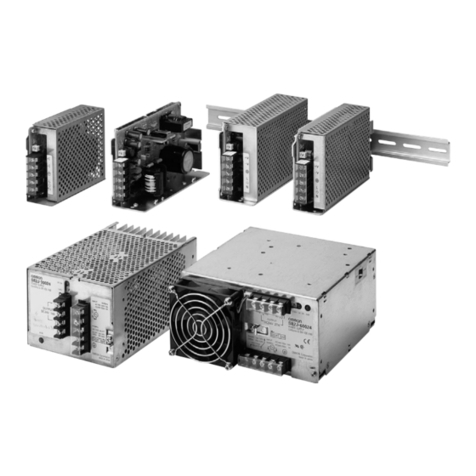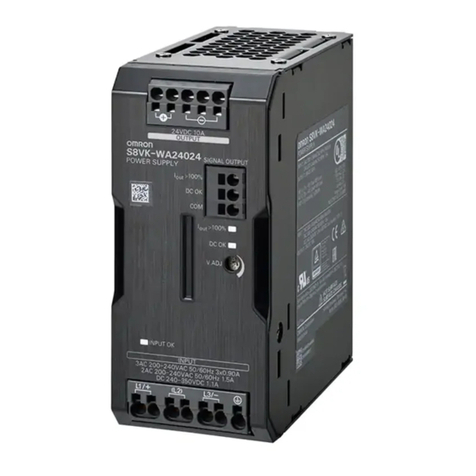
New S82K New S82K
8
Item PFC
No Yes
(-P models)
Single output Dual
outputs Single output
3 W 7.5 W 7.5 W 15 W 30 W 50 W 90 W
100 W 240 W 240 W
Other Ambient
temperature Operating: See
the derating curve in the
Engineering Data
section
(no condensation or icing)
Storage: –25°
C to 65
°
C (no condensation or icing)
Ambient
humidity Operating:
25% to 85%
Storage:
25% to 90%
Dielectric
strength
3,000 V
AC at 50/60 Hz for 1 min (between all inputs and outputs)
2,000 V
AC at 50/60 Hz for 1 min (between all inputs and GR terminal)
1,000 V
AC at 50/60 Hz for 1 min (between all outputs and GR terminal)
Alarm current: 10 mA (3- to 7.5-W models) 20 mA (15- to 100-W models) 25 mA (240-W models)
Insulation
resistance
100 M
Ω
min. at 500 VDC (between all outputs and all inputs/GR terminal)
Vibration
resistance
Malfunction: 10 to 55 Hz, 0.375-mm single amplitude for 2 hrs each in X, Y
,
and Z directions
Malfunction: 10 to
55 Hz, 0.15-mm single
amplitude for 2 hrs
each in X, Y
, and
Z directions
Shock resistance
Malfunction: 300 m/s
2
, 3 times each in
±
X,
±Y
, and
±
Z directions
Screw tightening
torque
0.74 N
S
m max. (see note 2)
Output indicator Y
es (green)
Electromagnetic
interference
(see note 1)
Conforms to FCC class B Conforms to FCC class A
EMC
(see note 3, 4)
3 to 100-W Models
(EMI): EN50081-1
Emission Enclosure:
EN55022 class B (equivalent to EN5501
1 class B)
Emission AC Mains:
EN55022 class B (equivalent to EN5501
1 class B)
Emission Output Ports:
EN55022 class A (with a recommended optional filter) (see note 3)
240-W Models
(EMI):
EN50081-2
Emission Enclosure: EN5501
1 class A (see note 4)
Emission AC Mains:
EN5501
1 class A (see note 4)
Harmonic Current:
EN61000-3-2 (only for S82K-P24024)
Common to All Models
(EMS): EN50082-2
Immunity ESD:
EN61000-4-2:
4-kV contact discharge (level 2)
8-kV air discharge (level 3)
Immunity Burst:
EN61000-4-4:
2-kV power-line (level 3)
2-kV output line (level 4)
Immunity Surge:
EN61000-4-5:
between 2-kV lines (except for 240-W models)
between 4-kV line and FG (except for 240-W models)
Approved
standards
Class 2 (UL 1310)/Class 2 (CSA C22.2 No. 950) (see notes 5 and 6)
UL 508 (Listing)/1950
CSA C22.2 No.14/No.950, EN50178 (VDE0160), EN60950
Conforms to VDE0106/P100
UL
508 (Listing)/1012
CSA C22.2 No.14, CSA
E.B. 1402C, EN50178
(VDE0160), EN60950
Conforms to
VDE106/P100
Weight 150
g max.
260 g
max.
380 g
max.
400 g
max.
600 g max.
1,800 g
max.
2,200 g max.
Note: 1.
Defined with a 100% load and the rated input voltage (100 or 200 V
AC).
2.
Do not press down on the terminal block with a force exceeding 75 N while tightening the terminals.
3. T
o ensure the emission ratings, a noise filter should be used on the output lines at the closest point.
(3- to 50-W models: S82Y
-JF3-N, 90- and 100-W models: S82Y
-JF6-N)
4. T
o ensure the Emission Enclosure rating, a ferrite ring core should be used on all cables (for S82K-P24024).
5.
Models other than dual output models satisfy the Class-2 requirements.
6. To
meet Class-2 requirements with the 100-W model, either a fuse or circuit breaker that is UL listed or CSA certified, and rated
at
4.2
A max. should be wired in series with the load to be connected to the power supply
. Only then can the power supply output be
considered
as meeting Class 2.
